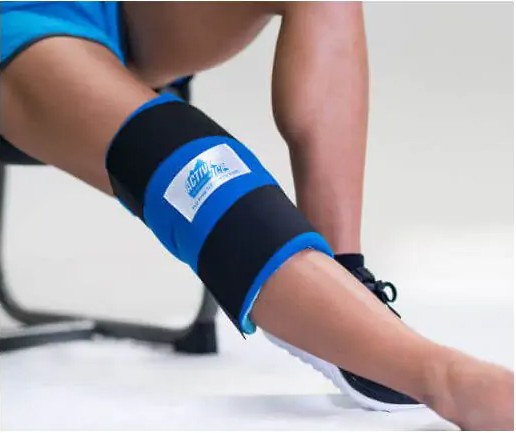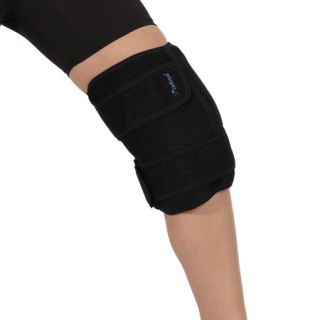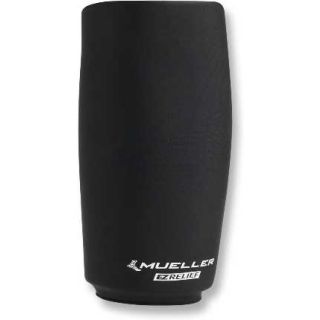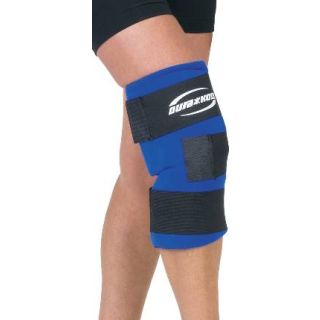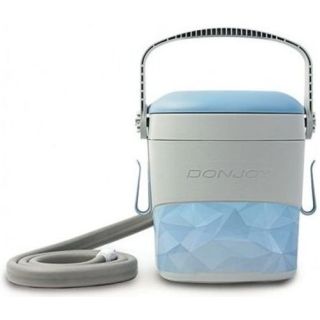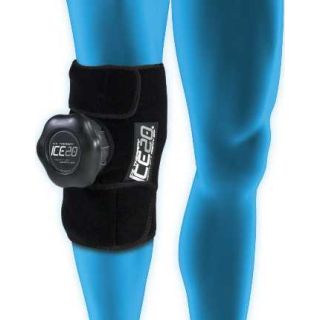Cold Pack For Knee Replacement
April 17, 2025Cold Pack for Knee Replacement: A Comprehensive Guide to Effective Recovery
Knee replacement surgery is a transformative procedure for those suffering from severe knee pain or mobility issues, often caused by arthritis or injury. However, the recovery process can be challenging, with swelling, pain, and stiffness being common post-operative symptoms. One of the most effective tools for managing these symptoms is the use of a cold pack for knee replacement. Cold therapy, or cryotherapy, plays a critical role in reducing inflammation, alleviating pain, and promoting faster healing.
This article explores the benefits, types, usage guidelines, and considerations for using a cold pack for knee replacement, ensuring an optimized recovery process.
Why Use a Cold Pack for Knee Replacement Recovery?
Post-operative swelling is a natural response to the trauma of surgery, but excessive swelling can delay healing and increase discomfort. A cold pack for knee replacement helps by constricting blood vessels, which reduces blood flow to the affected area and minimizes swelling. Additionally, cold therapy numbs nerve endings, providing pain relief without relying solely on medications. Using ice for knee replacement is a non-invasive, cost-effective, and drug-free method to manage post-surgical symptoms.
Cold therapy is particularly effective in the first few days to weeks after surgery, when inflammation and pain are most pronounced. By incorporating a cold pack for knee surgery into your recovery routine, you can enhance comfort, reduce the need for painkillers, and support your rehabilitation efforts. However, proper use is essential to avoid complications such as skin damage or frostbite.
Benefits of Using a Cold Pack for Knee Replacement
The advantages of using a cold pack for knee replacement extend beyond simple pain relief. Here are some key benefits:
-
Reduced Swelling and Inflammation: Applying a cold pack for knee surgery constricts blood vessels, limiting fluid buildup in the knee joint. This helps prevent excessive swelling, which can impede mobility and delay recovery.
-
Pain Management: Cold therapy numbs the nerves around the surgical site, providing immediate relief from post-operative pain. This can reduce reliance on opioid medications, which carry risks of side effects and dependency.
-
Improved Mobility: By controlling swelling, a post-surgery ice pack helps maintain joint flexibility, making physical therapy exercises more manageable.
-
Accelerated Healing: Proper swelling management promotes better blood circulation once the cold pack is removed, delivering essential nutrients to the healing tissues.
-
Convenience and Accessibility: Cold packs are affordable, widely available, and easy to use at home, making them a practical choice for most patients.
Types of Cold Packs for Knee Replacement Recovery
1. Reusable Gel Packs - Gel-based cold packs are popular due to their flexibility and ability to conform to the knee’s shape. These packs can be stored in the freezer and reused multiple times, making them cost-effective. Many gel packs come with a cloth cover to protect the skin and ensure even cold distribution.
2. Instant Cold Packs - Instant cold packs are single-use products that activate with a squeeze or shake, triggering a chemical reaction that produces cold. These are ideal for immediate use after surgery or when access to a freezer is limited, such as during travel.
3. Cold Therapy Machines - Cold therapy machines, also known as cryotherapy units, circulate cold water through a wrap that fits around the knee. These devices provide consistent, controlled cooling for extended periods, making them a premium option for post-surgery ice pack needs. While more expensive, they are highly effective for prolonged use.
4. Homemade Ice Packs - For those on a budget, homemade ice packs made from a bag of frozen peas or a sealed plastic bag filled with ice cubes can work well. However, these require careful wrapping in a towel to prevent direct skin contact and potential frostbite.
5. Wrap-Around Cold Packs - Designed specifically for knee replacement patients, wrap-around cold packs feature adjustable straps to secure the pack in place. These are ideal for hands-free use, allowing patients to move or rest comfortably while receiving cold therapy.When choosing a cold pack for knee replacement, consider factors such as ease of use, duration of cold retention, and comfort. Consulting with your surgeon or physical therapist can help you select the best option for your recovery needs.
How to Use a Cold Pack for Knee Replacement Safely
-
Timing: Apply the cold pack for 15 - 20 minutes at a time, with at least a 40-minute break between sessions. Overuse can lead to skin damage or reduced circulation.
-
Protect the Skin: Always place a thin cloth or towel between the cold pack and your skin to prevent frostbite or burns. Many commercial packs come with a protective sleeve for this purpose.
-
Frequency: In the first 48-72 hours after surgery, use the cold pack every 2-3 hours during waking hours. After this initial period, adjust based on your surgeon’s recommendations or as swelling decreases.
-
Positioning: Ensure the cold pack covers the entire surgical area, including above and below the knee, to address swelling effectively. Wrap-around packs are particularly useful for secure placement.
-
Monitor Skin Reaction: Check your skin regularly for signs of redness, numbness, or irritation. Discontinue use and consult a doctor if you notice any adverse reactions.
-
Combine with Elevation: For optimal swelling reduction, elevate your leg while applying the cold pack. This encourages fluid drainage away from the knee.
Choosing the Best Ice Pack for Knee Surgery
-
Duration of Cold Therapy: If you need prolonged cooling, a cold therapy machine or large gel pack may be ideal. For shorter sessions, instant cold packs or smaller gel packs suffice.
-
Portability: If you’re frequently on the move, compact or instant cold packs are more convenient than bulky machines.
-
Comfort and Fit: Look for packs designed for knees, with flexible materials or straps to ensure a snug fit.
-
Cost: While cold therapy machines offer advanced features, reusable gel packs or homemade options are more budget-friendly.
-
Ease of Maintenance: Reusable packs require freezer storage, while instant packs are disposable but less environmentally friendly.
Potential Risks and Precautions
-
Frostbite or Cold Burns: Direct contact with ice or prolonged application can damage the skin. Always use a barrier and adhere to recommended time limits.
-
Reduced Circulation: Excessive cold can impair blood flow, slowing healing in some cases. This is particularly concerning for patients with vascular issues.
-
Allergic Reactions: Some gel packs contain chemicals that may cause skin irritation in sensitive individuals.
-
Delayed Healing: Overuse of cold therapy beyond the initial recovery phase may interfere with the body’s natural inflammatory response, which is necessary for long-term healing.
Integrating Cold Therapy into Your Recovery Plan
-
Physical Therapy: Regular exercises prescribed by your therapist help restore strength and mobility. Cold therapy can reduce post-exercise swelling.
-
Medication: Use pain relievers or anti-inflammatory drugs as directed by your doctor, complementing the effects of cold therapy.
-
Rest and Elevation: Allow your knee adequate rest and keep it elevated to enhance the benefits of ice for knee replacement.
-
Compression: Some cold packs combine compression with cooling, further reducing swelling and supporting the joint.
Conclusion
Using a cold pack for knee replacement is a proven strategy to manage pain, reduce swelling, and accelerate recovery after surgery. Whether you opt for a reusable gel pack, a cold therapy machine, or a simple homemade solution, the key is to use it safely and consistently. By choosing the best ice pack for knee surgery and following proper guidelines, you can enhance your comfort and support your journey to full mobility. Always consult your surgeon or physical therapist for tailored recommendations, and integrate cold therapy into a holistic recovery plan for the best results. With the right approach, a post-surgery ice pack can be a game-changer in your knee replacement recovery.
